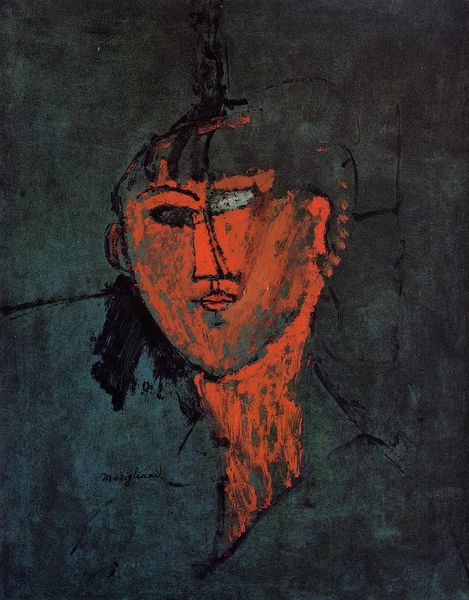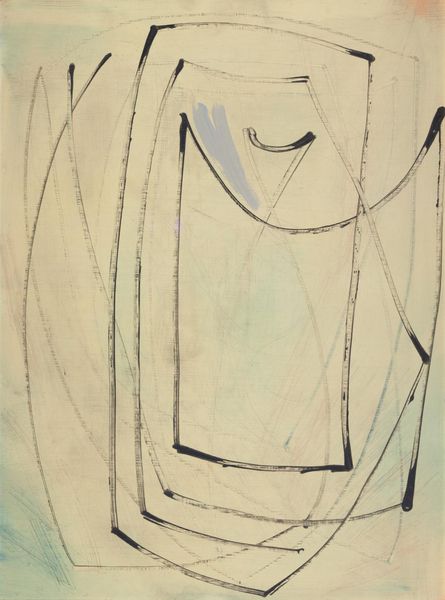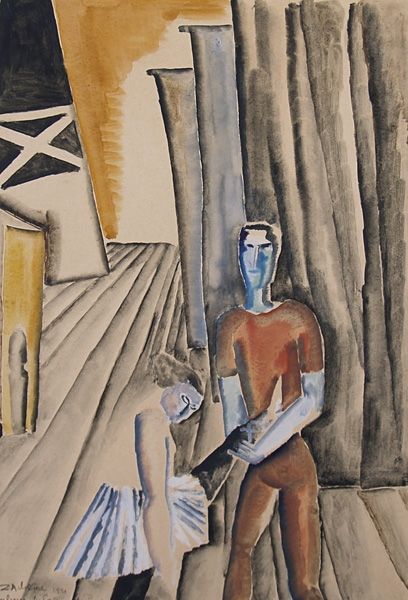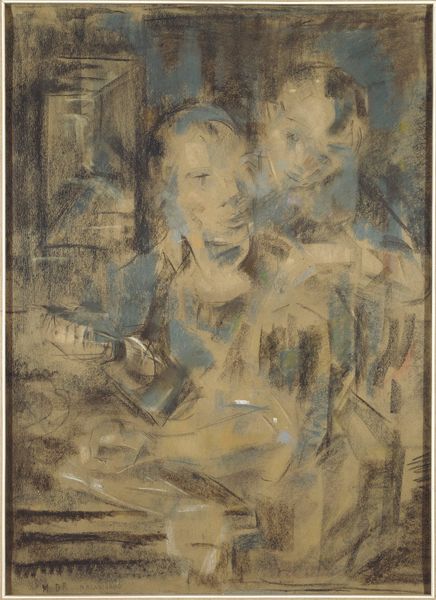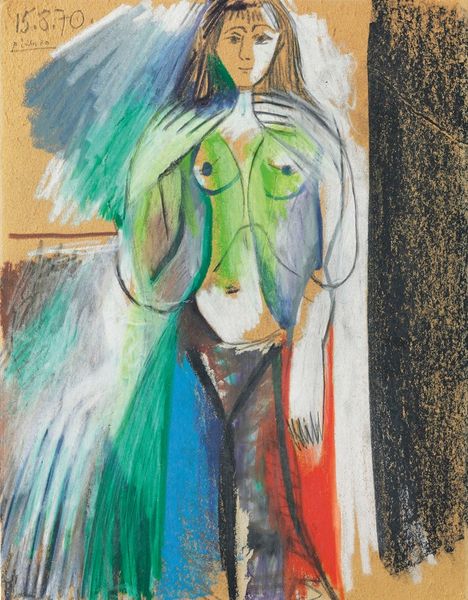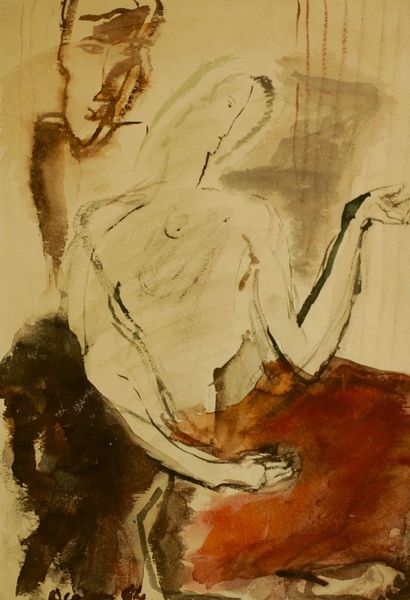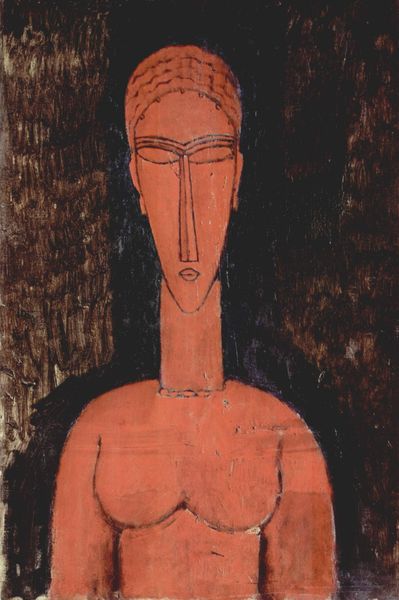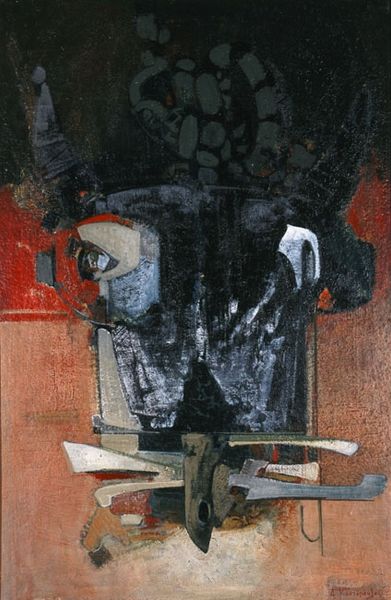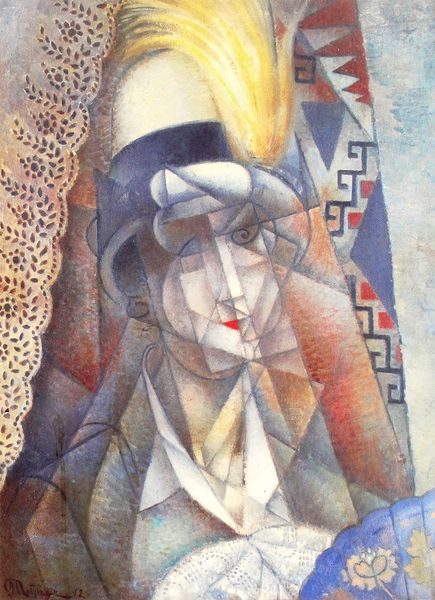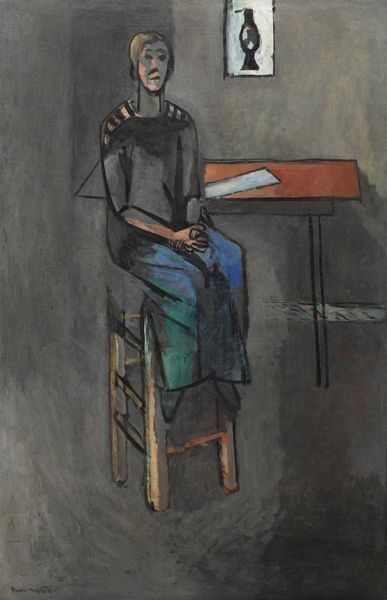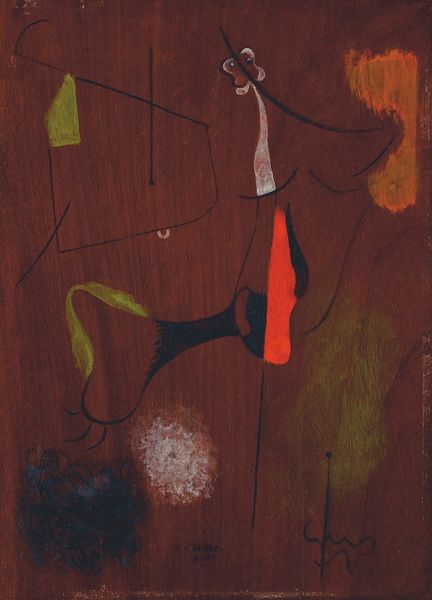
Dimensions: support: 689 x 625 mm frame: 925 x 685 x 120 mm
Copyright: © Succession Picasso/DACS 2014 | CC-BY-NC-ND 4.0 DEED, Photo: Tate
Curator: Here we have Picasso’s “Dora Maar Seated,” currently held at the Tate. He rendered this portrait, using oil on canvas, in 1938. Editor: It’s immediately striking—the muted palette and angular lines give it a sense of melancholy, even unease. What's your read? Curator: Well, Picasso's relationship with Dora Maar was complex, marked by both intellectual connection and emotional turmoil. The fractured composition could reflect the fractured nature of their relationship at the time. Editor: Exactly, her very identity seems disrupted, mirroring the societal disruptions of the era, like the rise of fascism. It makes you consider the female artist's position during wartime. Curator: Absolutely, and it shows how personal relationships intersect with broader socio-political currents. Editor: It's a potent reminder of how art can capture both individual experience and collective anxieties. Curator: Indeed, and it makes you appreciate the lasting power of Picasso's work to provoke thought and emotion.
Comments
tate 8 months ago
⋮
http://www.tate.org.uk/art/artworks/picasso-dora-maar-seated-t00341
Join the conversation
Join millions of artists and users on Artera today and experience the ultimate creative platform.
tate 8 months ago
⋮
Dora Maar was a painter who exhibited with the Surrealist group, before becoming a photographer and reporter. She was Picasso's mistress in the late 1930s and the war years, and one of his most important models during that period. A formidable personality, she was instrumental in encouraging Picasso's political awareness. He also admitted to being somewhat afraid of her. This work shows Dora as a smart, independent French woman, with her hands crossed elegantly in her lap. Gallery label, December 2007
